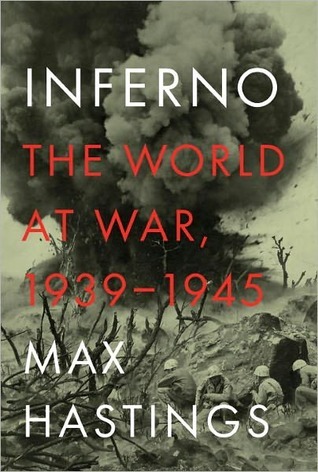More on this book
Community
Kindle Notes & Highlights
IN MID-JANUARY, a new wave of assaults on Finland began. In one position 4,000 Russians attacked 32 Finns; they lost 400 men, but only 4 defenders survived.
Scarred by memories of the 1914–18 devastation and slaughter in their own country, the French were bent upon waging war somewhere other than on their own soil. Gamelin planned a decisive battle in Belgium, heedless of the fact that the Germans had other ideas.
It was a striking characteristic of Axis behaviour until 1945 that while there was some limited consultation between Germany, Italy and Japan, there was no attempt to join in creating a coherent common strategy for defeating the Allies.
Churchill never defined credible war aims beyond the defeat of the Axis; when the tide of battle turned, this would become a serious weakness of his leadership and a threat to his domestic popularity. But in 1940–41 his foremost challenge was to convince his people that the war could be won.
Hitler’s invasion of the Soviet Union was the defining event of the war, just as the Holocaust was the defining act of Nazism. Germany embarked upon an attempt to fulfil the most ambitious objectives in its history, to push back the frontiers of Slavdom and create a new empire in the east. The Nazis argued that they were merely following the historic example set by other European nations in pursuing Lebensraum, living space, by seizing an empire in the territories of savages.
It did not occur to Hitler, after his victories in the west, that it might be more difficult to overcome a brutalised society, inured to suffering, than democracies such as France and Britain, in which moderation and respect for human life were deemed virtues.
The Russians lost twenty casualties for every German, six tanks for every panzer; in October their losses were even worse than those of the summer, with sixty-four divisions written off.
IN BERLIN on 28 November, a conference of industrialists chaired by armaments supremo Fritz Todt reached a devastating conclusion: the war against Russia was no longer winnable. Having failed to achieve a quick victory, Germany lacked resources to prevail in a sustained struggle. Next day, Todt and tank-production chief Walter Rohland met Hitler. Rohland argued that, once the United States became a belligerent, it would be impossible to match Allied industrial strength. Todt, though an ardent Nazi, said, “This war can no longer be won by military means.” Hitler demanded, “How then shall I end
...more
From the outset, fleeing British clung to the racial conventions of empire and shamelessly abandoned their native subjects.
But no more in Japan than in Germany did any faction display the will and power to deflect the country from its march towards immolation. Shikata ga nai: it could not be helped. If this was a monumentally inadequate excuse for condemning millions to death without hope of securing any redemptive compensation, it is a constant of history that nations which start wars find it very hard to stop them.
The fundamental cause of the disasters which befell the German armies in Russia in the winter of 1942–43 was that they had undertaken a task beyond their nation’s powers.
The Soviet Union suffered 65 percent of all Allied military deaths, China 23 percent, Yugoslavia 3 percent, the United States and Britain 2 percent each, France and Poland 1 percent each. About 8 percent of all Germans died, compared with 2 percent of Chinese, 3.44 percent of Dutch people, 6.67 percent of Yugoslavs, 4 percent of Greeks, 1.35 percent of French, 3.78 percent of Japanese, 0.94 percent of British and 0.32 percent of Americans. Within the armed forces, 30.9 percent of Germans conscripted into the Wehrmacht died, 17.35 percent of the Luftwaffe (including paratroopers and ground
...more
The machine gunner Aleksandr Gordeev deplored the crudity of his own army’s tactics: “The frontal attacks puzzled me. Why advance straight into German machine-gun fire? Why not make flank attacks?” He briefly deluded himself that his own company, reduced to one-third strength, would be spared from making further assaults, but instead early one morning it was reinforced by rear-area personnel, some of them clerks. They were issued double rations of vodka, “and those who wanted it drank more.” Gordeev’s assistant gunner was reassigned as a rifleman, and “walked off as though assured he was
...more
In Soviet thinking the concept of economy of force has little place. Whereas to an Englishman the taking of a sledgehammer to crack a nut is a wrong decision and a sign of mental immaturity … in Russian eyes the cracking of nuts is clearly what sledgehammers are for.
From 6 April to 22 June, throughout the Pacific theatre, there were ten major suicide attacks by day and night involving 1,465 aircraft, plus a further 4,800 conventional sorties. Kamikazes sank 27 ships and damaged 164, while bombers sank 1 and damaged 63. About 20 percent of kamikaze assaults scored hits—ten times the success rate for conventional attacks. Only the overwhelming strength of the U.S. Navy enabled it to withstand such punishment.
Just as Hitler was the architect of Germany’s devastation, the Tokyo regime bore overwhelming responsibility for what took place at Hiroshima and Nagasaki. If Japan’s leaders had bowed to logic, as well as to the welfare of their own people, by quitting the war, the atomic bombs would not have been dropped.
Combatants fared better than civilians: around three-quarters of all those who perished were unarmed victims rather than active participants in the struggle.
The best recent research suggests that 5.7 million Jews of all nationalities—out of a prewar Jewish population of 7.3 million in lands occupied by Hitler—were killed by the Nazis in their attempt to achieve a “Final Solution.


